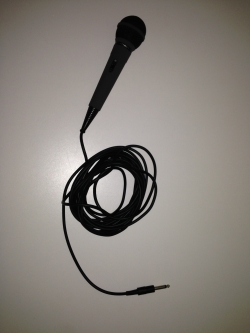Imagine you are sitting on top of a tree in the middle of a forest. From where you sit, you can see blue sky and green tree tops all around you. Suddenly, far away, you see something new: clouds of smoke. You know at once this is no ordinary smoke; it's a warning from someone far away. One big cloud, two small clouds, it means danger, but what kind? Unless you can figure out what those signals mean, something terrible could happen. It is time to find someone who can decode that message and fast.

Where there's smoke, there's fire.
Photo by Christian Ziegler Photos courtesy of Christian Ziegler., CC BY 2.5 , via Wikimedia Commons
While smoke signals in the middle of the forest might not seem to have anything to do with your inner ear, understanding messages from far away is what you inner ear does every day. One of the inner ear's jobs is to change the sound vibrations from your environment into something that the brain can understand. Hearing is not the only job of the inner ear; the inner ear also helps us to keep from falling over all the time. Good balance is very important for moving in the world around us and keeps us from hurting ourselves or others. The inner ear is where good balance starts.
Let us start with how your inner ear helps you hear. The first part of your inner ear is the cochlea, which is made of three spiral shaped tubes that are filled with something like water to carry sound further into the body. This liquid moves when the sound vibrations from the middle ear push on it. The sound moves up one side and down the other side touching the cells that line the walls inside. These cells move when sound hits them; the two sides of the cochlea help us to hear different pitches in sound. Higher pitched sounds are received by the cells on the upward part and the lower pitched sounds on the lower part. These cells now take our sound to the next part, the third tube.
Between the two spirals of the cochlea is the part of your ear that's sometimes called the body's microphone. The organ of corti is a tube with hair-like cells that take the sound vibrations and changes them into electricity. Our brain runs on electricity; for it to understand sound, we have to change sound into electricity. When the hair-like cells are pushed by the sound, an important change happens. The moving sound is changed into electricity and is now ready for the last part of its trip to the brain.
Now that the energy from the sound vibrations is changed into electricity, it has only one more thing to do, get to our brain. The auditory nerve is like a wire that takes the newly changed sound from the ear to the brain. The tiny hair-like cells brush against the nerve transferring electricity to the nerve. From there, it runs along the nerve to two different parts of the brain that interpret the sound. It's just like the wire that hooks a microphone to a speaker, only it is the ear that is plugged into the brain, where you hear and can make sense of sound. Now the work of hearing is done, but you inner ear is not done yet. It has another important job to do.

The auditory nerve is a lot like this microphone wire. Just not as coiled up.
Inside your inner ear there are also three other small tubes. These small tubes are called the semicircular canals, and they help the body to know if we are standing up, lying down, or bending over. How do they do that? These canals are filled with a liquid that moves when your head moves, giving your body information about where you are and where the ground is. It would be hard to live our lives if we couldn't keep ourselves standing up, another important reason to keep your ears healthy.
Think of it like this, if you saw a picture of an empty water bottle, could you tell if the bottle was upside down or not? How about if the bottle had water in it? The water always stays level with the ground so no matter how you turn the bottle, you will always know where the ground is. That's how the inner ear helps us to balance; it is always telling us where the ground is. Of course, some things may affect that balance. If you take that bottle of water and spin it round and round, the water inside will start to spin, and if you do it long enough, it will keep spinning even when you stop moving the bottle. This same thing happens to you when you spin around. When you stop spinning, the liquid in your ears keeps moving and that's why you might feel dizzy and fall down -- your body is not sure where the ground is.

That will make your inner ear spin!
Oxana Maher / Spinning around
It seems like sound takes a pretty long trip to reach our brains. The really amazing thing about it is that it all happens so fast that we do not even have time to notice it happening. Our bodies are a well designed machine, and we still have a lot to learn about them. The next time you hear a beautiful sound like a piano playing or a bird singing, remember how that sound made it to your brain. It had a truly incredible journey!